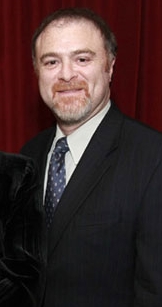
Otorhinolaryngology is a surgical subspecialty within medicine that deals with the surgical and medical management of conditions of the head and neck. Doctors who specialize in this area are called otorhinolaryngologists, otolaryngologists, head and neck surgeons, or ENT surgeons or physicians. Patients seek treatment from an otorhinolaryngologist for diseases of the ear, nose, throat, base of the skull, head, and neck. These commonly include functional diseases that affect the senses and activities of eating, drinking, speaking, breathing, swallowing, and hearing. In addition, ENT surgery encompasses the surgical management of cancers and benign tumors and reconstruction of the head and neck as well as plastic surgery of the face, scalp, and neck.

Tracheal intubation, usually simply referred to as intubation, is the placement of a flexible plastic tube into the trachea (windpipe) to maintain an open airway or to serve as a conduit through which to administer certain drugs. It is frequently performed in critically injured, ill, or anesthetized patients to facilitate ventilation of the lungs, including mechanical ventilation, and to prevent the possibility of asphyxiation or airway obstruction.
Vocal cord nodules are bilaterally symmetrical benign white masses that form at the midpoint of the vocal folds. Although diagnosis involves a physical examination of the head and neck, as well as perceptual voice measures, visualization of the vocal nodules via laryngeal endoscopy remains the primary diagnostic method. Vocal fold nodules interfere with the vibratory characteristics of the vocal folds by increasing the mass of the vocal folds and changing the configuration of the vocal fold closure pattern. Due to these changes, the quality of the voice may be affected. As such, the major perceptual signs of vocal fold nodules include vocal hoarseness and breathiness. Other common symptoms include vocal fatigue, soreness or pain lateral to the larynx, and reduced frequency and intensity range. Airflow levels during speech may also be increased. Vocal fold nodules are thought to be the result of vocal fold tissue trauma caused by excessive mechanical stress, including repeated or chronic vocal overuse, abuse, or misuse. Predisposing factors include profession, gender, dehydration, respiratory infection, and other inflammatory factors.

Laryngitis is inflammation of the larynx. Symptoms often include a hoarse voice and may include fever, cough, pain in the front of the neck, and trouble swallowing. Typically, these last under two weeks.

Laryngectomy is the removal of the larynx. In a total laryngectomy, the entire larynx is removed with the separation of the airway from the mouth, nose and esophagus. In a partial laryngectomy, only a portion of the larynx is removed. Following the procedure, the person breathes through an opening in the neck known as a stoma. This procedure is usually performed by an ENT surgeon in cases of laryngeal cancer. Many cases of laryngeal cancer are treated with more conservative methods. A laryngectomy is performed when these treatments fail to conserve the larynx or when the cancer has progressed such that normal functioning would be prevented. Laryngectomies are also performed on individuals with other types of head and neck cancer. Less invasive partial laryngectomies, including tracheal shaves and feminization laryngoplasty may also be performed on transgender women and other female or non-binary identified individuals to feminize the larynx and/or voice. Post-laryngectomy rehabilitation includes voice restoration, oral feeding and more recently, smell and taste rehabilitation. An individual's quality of life can be affected post-surgery.

The recurrent laryngeal nerve (RLN) is a branch of the vagus nerve that supplies all the intrinsic muscles of the larynx, with the exception of the cricothyroid muscles. There are two recurrent laryngeal nerves, right and left. The right and left nerves are not symmetrical, with the left nerve looping under the aortic arch, and the right nerve looping under the right subclavian artery then traveling upwards. They both travel alongside the trachea. Additionally, the nerves are among the few nerves that follow a recurrent course, moving in the opposite direction to the nerve they branch from, a fact from which they gain their name.

Bogart–Bacall syndrome (BBS) is a voice disorder that is caused by abuse or overuse of the vocal cords.
A hoarse voice, also known as dysphonia or hoarseness, is when the voice involuntarily sounds breathy, raspy, or strained, or is softer in volume or lower in pitch. A hoarse voice can be associated with a feeling of unease or scratchiness in the throat. Hoarseness is often a symptom of problems in the vocal folds of the larynx. It may be caused by laryngitis, which in turn may be caused by an upper respiratory infection, a cold, or allergies. Cheering at sporting events, speaking loudly in noisy situations, talking for too long without resting one's voice, singing loudly, or speaking with a voice that is too high or too low can also cause temporary hoarseness. A number of other causes for losing one's voice exist, and treatment is generally by resting the voice and treating the underlying cause. If the cause is misuse or overuse of the voice, drinking plenty of water may alleviate the problems.
Spasmodic dysphonia, also known as laryngeal dystonia, is a disorder in which the muscles that generate a person's voice go into periods of spasm. This results in breaks or interruptions in the voice, often every few sentences, which can make a person difficult to understand. The person's voice may also sound strained or they may be nearly unable to speak. Onset is often gradual and the condition is lifelong.

Bronchoscopy is an endoscopic technique of visualizing the inside of the airways for diagnostic and therapeutic purposes. An instrument (bronchoscope) is inserted into the airways, usually through the nose or mouth, or occasionally through a tracheostomy. This allows the practitioner to examine the patient's airways for abnormalities such as foreign bodies, bleeding, tumors, or inflammation. Specimens may be taken from inside the lungs. The construction of bronchoscopes ranges from rigid metal tubes with attached lighting devices to flexible optical fiber instruments with realtime video equipment.
Puberphonia is a functional voice disorder that is characterized by the habitual use of a high-pitched voice after puberty, hence why many refer to the disorder as resulting in a 'falsetto' voice. The voice may also be heard as breathy, rough, and lacking in power. The onset of puberphonia usually occurs in adolescence, between the ages of 11 and 15 years, at the same time as changes related to puberty are occurring. This disorder usually occurs in the absence of other communication disorders.
Godfrey Edward Arnold, born as Gottfried Eduard Arnold, was an Austrian American professor of medicine and researcher. His studies centered on speech, speech disorder and clinical communicology.

Laryngopharyngeal reflux (LPR) or laryngopharyngeal reflux disease (LPRD) is the retrograde flow of gastric contents into the larynx, oropharynx and/or the nasopharynx. LPR causes respiratory symptoms such as cough and wheezing and is often associated with head and neck complaints such as dysphonia, globus pharyngis, and dysphagia. LPR may play a role in other diseases, such as sinusitis, otitis media, and rhinitis, and can be a comorbidity of asthma. While LPR is commonly used interchangeably with gastroesophageal reflux disease (GERD), it presents with a different pathophysiology.
Radu Lucian Sulica is a Romanian-born American laryngologist and author. He currently serves as Professor and Chief, Laryngology and Voice Disorders at the Sean Parker Institute for the Voice at Weill Cornell Medical College in New York City. Sulica has published several books in the field, including Vocal Fold Paralysis, the compendium on this dominant topic in laryngology. He has written a review of a sub-category of vocal fold paralysis, the idiopathic cases.

Steven Marc Zeitels is the Eugene B. Casey Professor of Laryngeal Surgery at Harvard Medical School and the Director of Massachusetts General Hospital (MGH) Center for Laryngeal Surgery and Voice Rehabilitation. He specializes in diseases and disorders of the throat, voice, airway, and larynx. His contributions to voice and laryngeal surgery are highly recognized in the USA and throughout the world. In 2004, the first endowed Chair in Laryngeal Surgery at Harvard Medical School was created for him while he re-established a Harvard Laryngeal Surgery service at the MGH, which had not been present since the 1920s. He has received more than 75 awards and honored lectureships for his achievements including the Casselberry Award, DeRoaldes Medal and the Newcomb Award from the American Laryngological Association. Zeitels was the 4th surgeon in the organization's history to win all three awards. He has also received the Chevalier Jackson Award and the annual Broyles Maloney Award from the American Broncho-Esophageal Association, as well as the Distinguished Alumnus Award from the Boston University (BU) School of Medicine in 2007. Zeitels is also well known for performing complex microsurgery to restore the voices of performing vocalists and has done so on 18 Grammy award-winning artists.
Tracheal intubation, an invasive medical procedure, is the placement of a flexible plastic catheter into the trachea. For millennia, tracheotomy was considered the most reliable method of tracheal intubation. By the late 19th century, advances in the sciences of anatomy and physiology, as well as the beginnings of an appreciation of the germ theory of disease, had reduced the morbidity and mortality of this operation to a more acceptable rate. Also in the late 19th century, advances in endoscopic instrumentation had improved to such a degree that direct laryngoscopy had finally become a viable means to secure the airway by the non-surgical orotracheal route. Nasotracheal intubation was not widely practiced until the early 20th century. The 20th century saw the transformation of the practices of tracheotomy, endoscopy and non-surgical tracheal intubation from rarely employed procedures to essential components of the practices of anesthesia, critical care medicine, emergency medicine, gastroenterology, pulmonology and surgery.
Laryngeal cysts are cysts involving the larynx or more frequently supraglottic locations, such as epiglottis and vallecula. Usually they do not extend to the thyroid cartilage. They may be present congenitally or may develop eventually due to degenerative cause. They often interfere with phonation.
Thyroplasty is a phonosurgical technique designed to improve the voice by altering the thyroid cartilage of the larynx, which houses the vocal cords in order to change the position or the length of the vocal cords.
Muscle tension dysphonia (MTD) was originally coined in 1983 by Morrison and describes a dysphonia caused by increased muscle tension of the muscles surrounding the voice box: the laryngeal and paralaryngeal muscles. MTD is a unifying diagnosis for a previously poorly categorized disease process. It allows for the diagnosis of dysphonia caused by many different etiologies and can be confirmed by history, physical exam, laryngoscopy and videostroboscopy, a technique that allows for the direct visualization of the larynx, vocal cords, and vocal cord motion.









